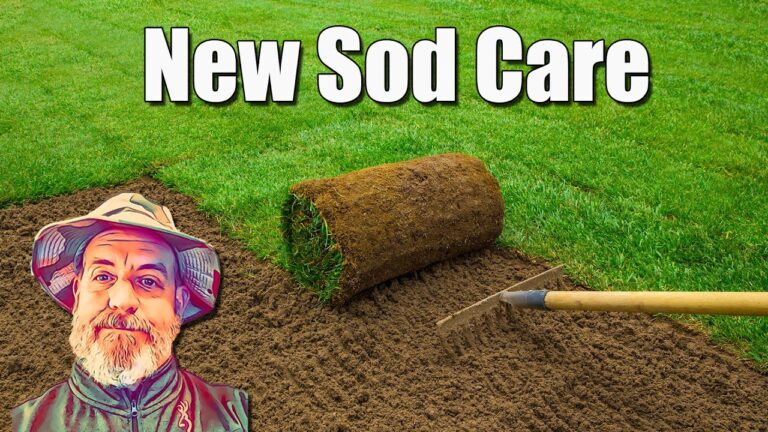If you’ve recently installed sod, congratulations! You’ve made a great investment in your home’s curb appeal and outdoor living space. However, in order to ensure that your new lawn thrives and remains healthy, it’s important to provide it with proper care and maintenance. This article will provide a comprehensive guide to sod care 101, including watering, mowing, fertilizing, and troubleshooting common problems.
Watering:
One of the most important aspects of sod care is proper watering. It’s essential to keep your new sod consistently moist for the first few weeks after installation in order to promote root growth. Here are some tips for watering your new lawn:
- Water your sod deeply and infrequently. This means that you should water it enough to soak the soil to a depth of at least 6 inches, but not so much that the soil becomes waterlogged.
- Water your sod in the morning or early evening to minimize water loss due to evaporation.
- Use a sprinkler or irrigation system to ensure that your lawn is receiving even coverage.
Mowing:
Once your new sod has established roots (usually within 2-3 weeks), it’s time to start mowing it. Here are some tips for mowing your new lawn:
- Wait until your sod has reached a height of 3-4 inches before mowing it for the first time.
- Set your mower blade to a height of 2-3 inches. Cutting your lawn too short can stress it and leave it vulnerable to weeds and other problems.
- Avoid mowing your lawn when it’s wet, as this can lead to clumping and uneven cuts.
- Mow your lawn regularly (about once a week) to maintain a healthy and attractive appearance.
Fertilizing:
Fertilizing your new sod is an important part of keeping it healthy and promoting growth. Here are some tips for fertilizing your new lawn:
- Wait until your sod has been installed for at least 4 weeks before applying fertilizer.
- Choose a fertilizer that is specifically formulated for new sod and follow the manufacturer’s instructions carefully.
- Apply fertilizer in the morning or early evening, and water it in immediately after application.
- Don’t over-fertilize your lawn, as this can lead to rapid growth and weak, vulnerable roots.
Troubleshooting:
Even with proper care, your new sod may encounter some common problems. Here are some tips for troubleshooting common issues:
- If your sod is turning brown or yellow, it may be a sign of overwatering or underwatering. Adjust your watering schedule accordingly.
- If you notice bald patches in your lawn, it may be due to uneven or insufficient watering. Water these areas more frequently until they begin to fill in.
- If you notice pests or weeds in your lawn, consult with a professional or a knowledgeable lawn care specialist to determine the best course of action.
Conclusion:
Proper care and maintenance are essential to ensuring that your new sod remains healthy and attractive for years to come. By following the tips outlined in this article, including watering deeply and infrequently, mowing regularly, fertilizing as needed, and troubleshooting common issues, you can enjoy a beautiful and thriving lawn.
With a little TLC (tender loving care), your new sod can become a centerpiece of your outdoor living space.
Originally posted 2023-04-22 08:31:47.

